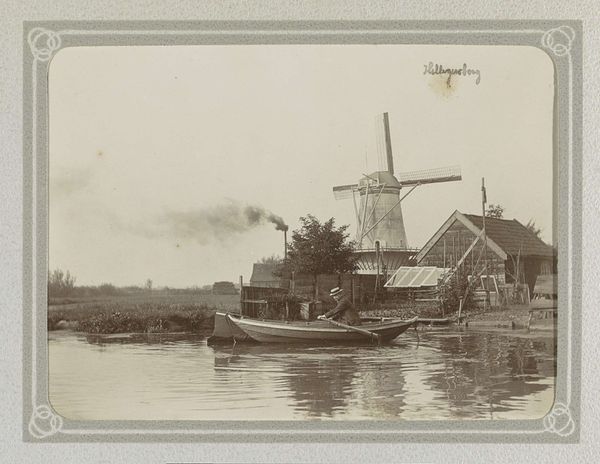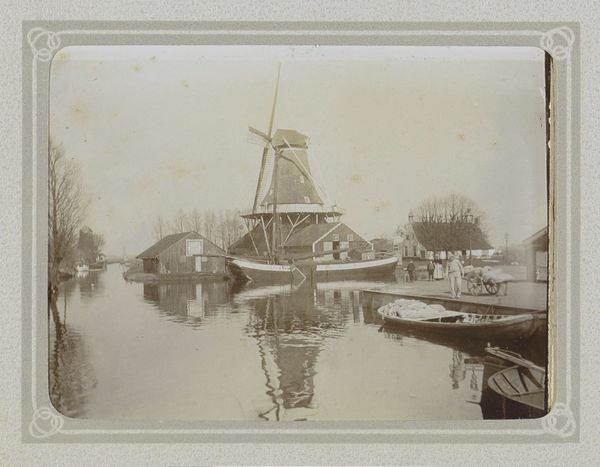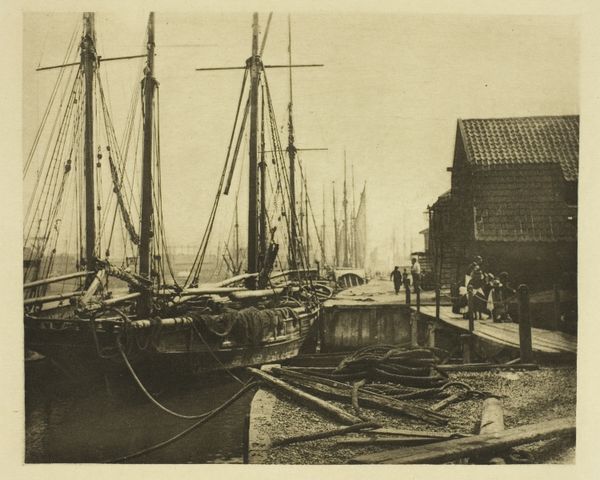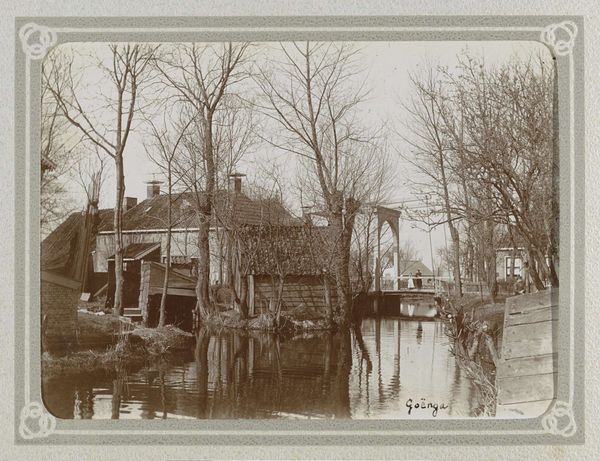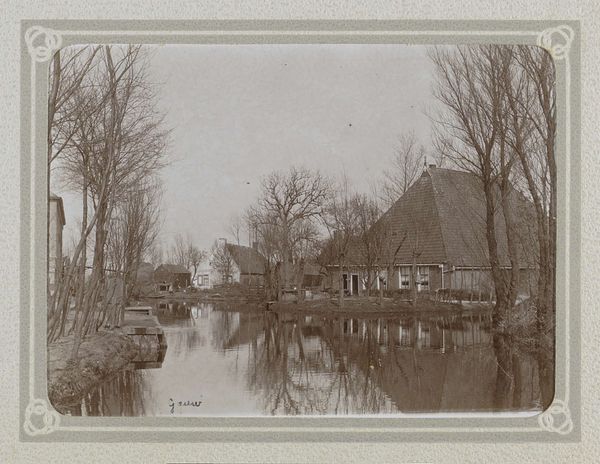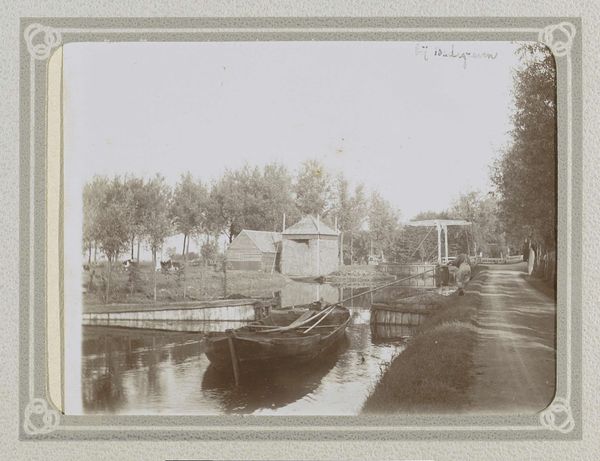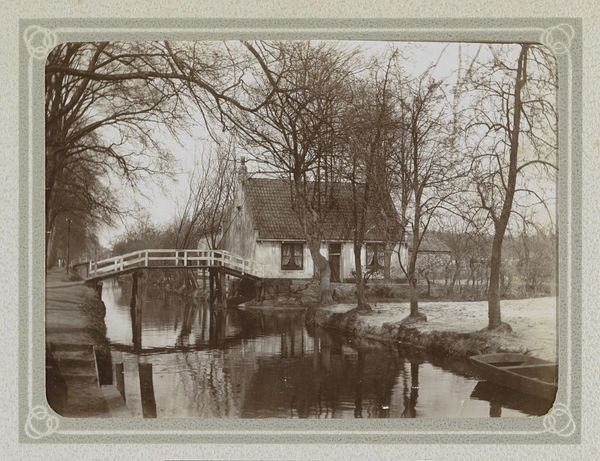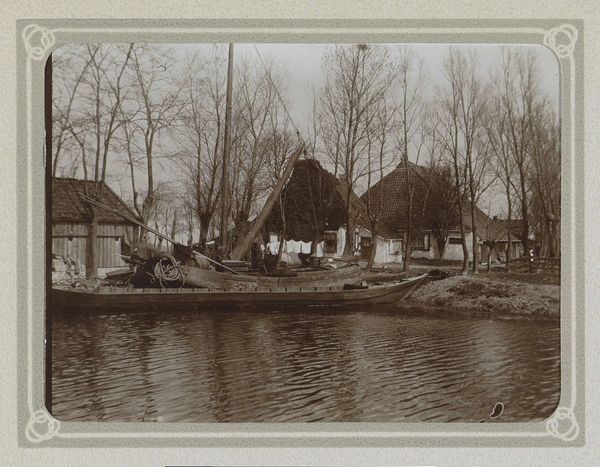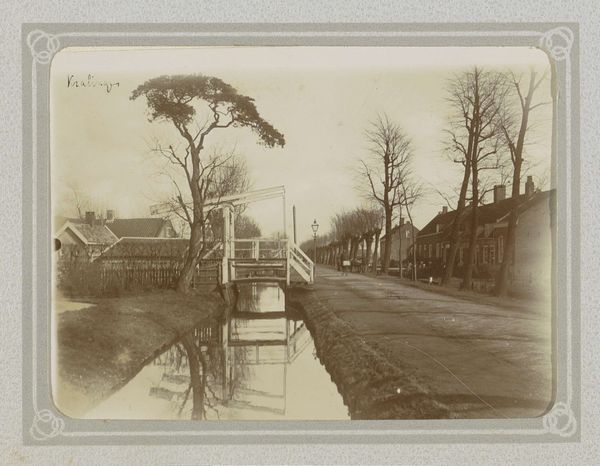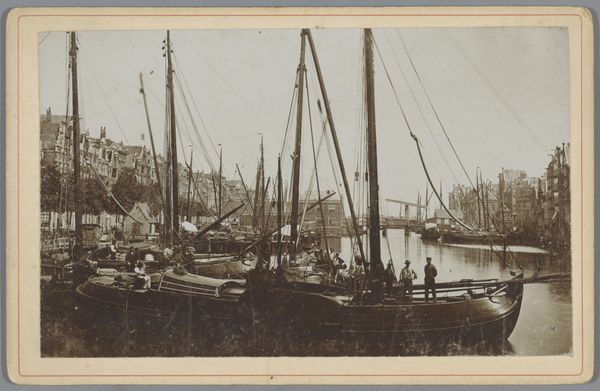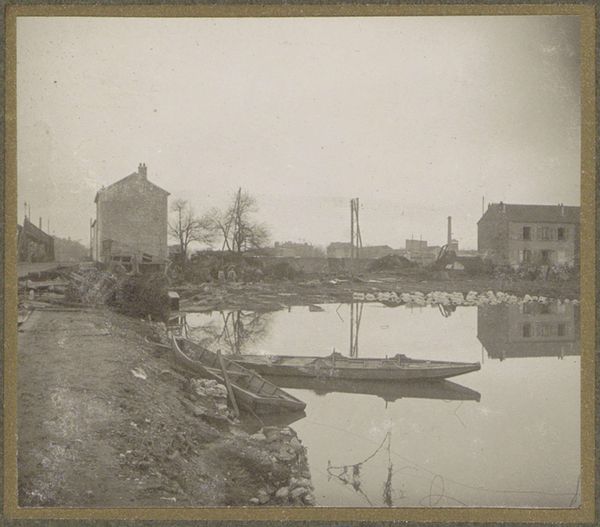
Schippers op een sloot te Overschie, op de achtergrond paltrokhoutzaagmolen de Adelaar c. 1905 - 1907
0:00
0:00
print, photography
#
dutch-golden-age
# print
#
landscape
#
photography
#
cityscape
Dimensions: height 81 mm, width 110 mm
Copyright: Rijks Museum: Open Domain
Curator: Welcome. Today we'll be discussing "Schippers op een sloot te Overschie, op de achtergrond paltrokhoutzaagmolen de Adelaar"– a photograph by Folkert Idzes de Jong, dating circa 1905-1907. Editor: It’s…melancholic. A monochromatic, almost sepia-toned scene. The windmill in the distance evokes a feeling of bygone days, a quieter existence centered on slow industry. Curator: Indeed. Note the composition, how the artist leads the eye along the canal with subtly receding verticals. The windmill provides a solid anchor to the photograph. A study in structure and form. Editor: It’s more than just form; it speaks to a specific history, doesn't it? We are likely viewing working-class life connected to waterways and wind power. The photograph also positions labor--the unseen labor used to both power windmills, saw wood, and sail boats. Curator: Yes, labor is certainly suggested. However, let’s also acknowledge the tones achieved via photographic methods of the early 20th century, an engagement with documenting subjects with tools specific to their time. Editor: But by intentionally positioning the canal to mirror back the composition of homes and workers, this photograph implicates the lives of Dutch laborers; by placing it front and center, it speaks volumes about Dutch culture. Curator: Perhaps. Still, let's not lose sight of the delicate rendering of light and shadow. How it softens the industrial subject. This aesthetic consideration tempers the reading you’re proposing. Editor: Or enhances it! Because shadow is also metaphor--for that which has gone unacknowledged or been actively erased in standard depictions of Dutch industry, particularly for the labor force behind that progress. Curator: Ultimately, what this print demonstrates so powerfully is the enduring strength of composition and form to structure one's eye. The framing and tone give off a sense of tranquility. Editor: I agree. This photograph invites introspection on more than its aesthetic construction. It beckons us to consider the labor and the conditions of these workers who may never appear in a standard narrative.
Comments
No comments
Be the first to comment and join the conversation on the ultimate creative platform.
